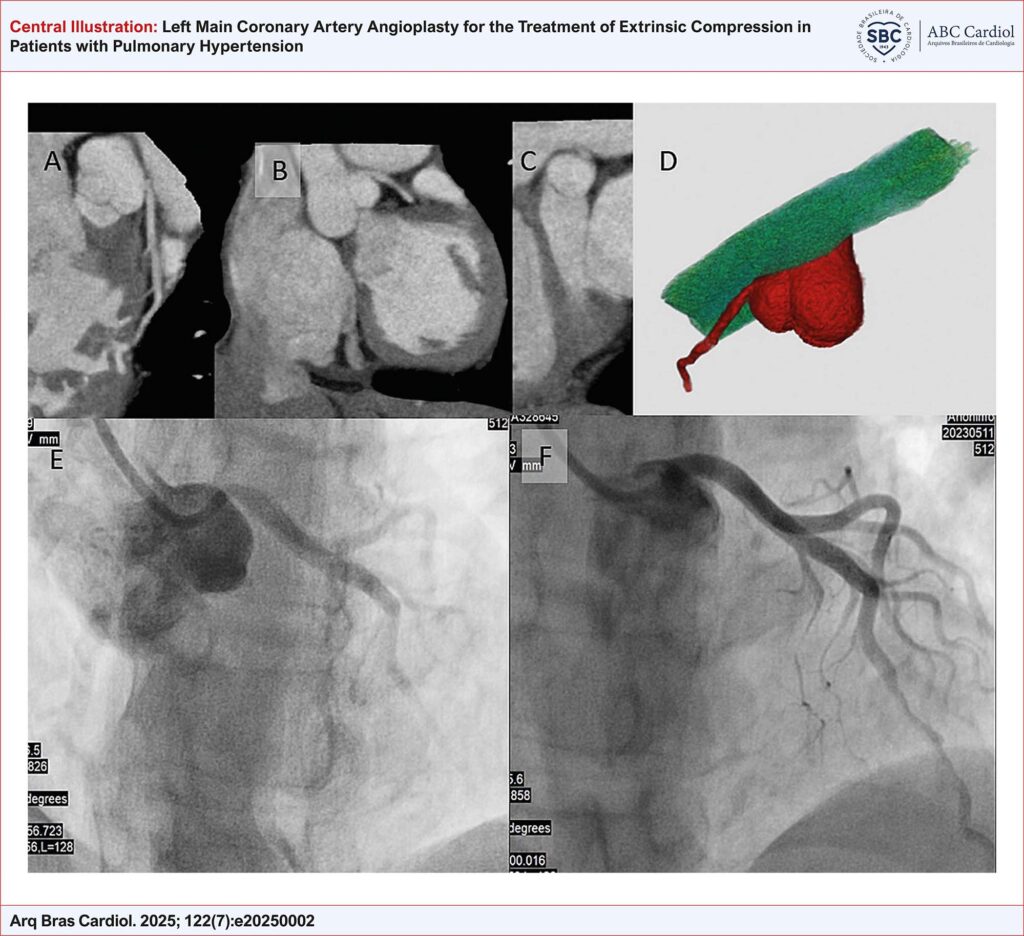Arq. Bras. Cardiol. 2025; 122(7): e20250002
Left Main Coronary Artery Angioplasty for the Treatment of Extrinsic Compression in Patients with Pulmonary Hypertension
This Original Article is referred by the Short Editorial "Coronary Compression in Pulmonary Hypertension: A Treatable Threat Hidden in Plain Sight".
Abstract
Background
The most common clinical presentation of pulmonary hypertension (PH) includes exertional dyspnea, signs of systemic congestion, and syncope. Angina pectoris can also be a relevant manifestation, especially in cases where the left main coronary artery (LMCA) is externally compressed by a dilated pulmonary artery. However, significant gaps remain regarding the most appropriate diagnostic and therapeutic strategies for coronary obstruction in this clinical scenario.
Objectives
To assess the feasibility and impact of coronary angioplasty with stent implantation on symptom relief in patients with PH and extrinsic compression of LMCA.
Methods
This descriptive study included 12 patients with PH who were followed at the Pulmonary Circulation Outpatient Clinic of the Instituto do Coração, Hospital das Clínicas da Faculdade de Medicina da Universidade de São Paulo. All patients underwent coronary angioplasty with stent implantation to treat extrinsic compression of LMCA.
Results
A total of 12 patients were analyzed, with a mean age of 47.9 years, predominantly with group 1 PH and under specific therapy. All procedures achieved excellent immediate results, with angina relief observed at 30 days. During a mean follow-up of 33 months, no procedure-related complications were reported, and angina symptoms remained controlled. Four patients died due to progressive heart failure.
Conclusion
The findings support the feasibility of coronary angioplasty as a strategy for symptomatic relief of angina in patients with LMCA compression associated with PH. Further studies are needed to evaluate the impact of this intervention on hard clinical outcomes, as well as the role of screening in asymptomatic patients.
370

